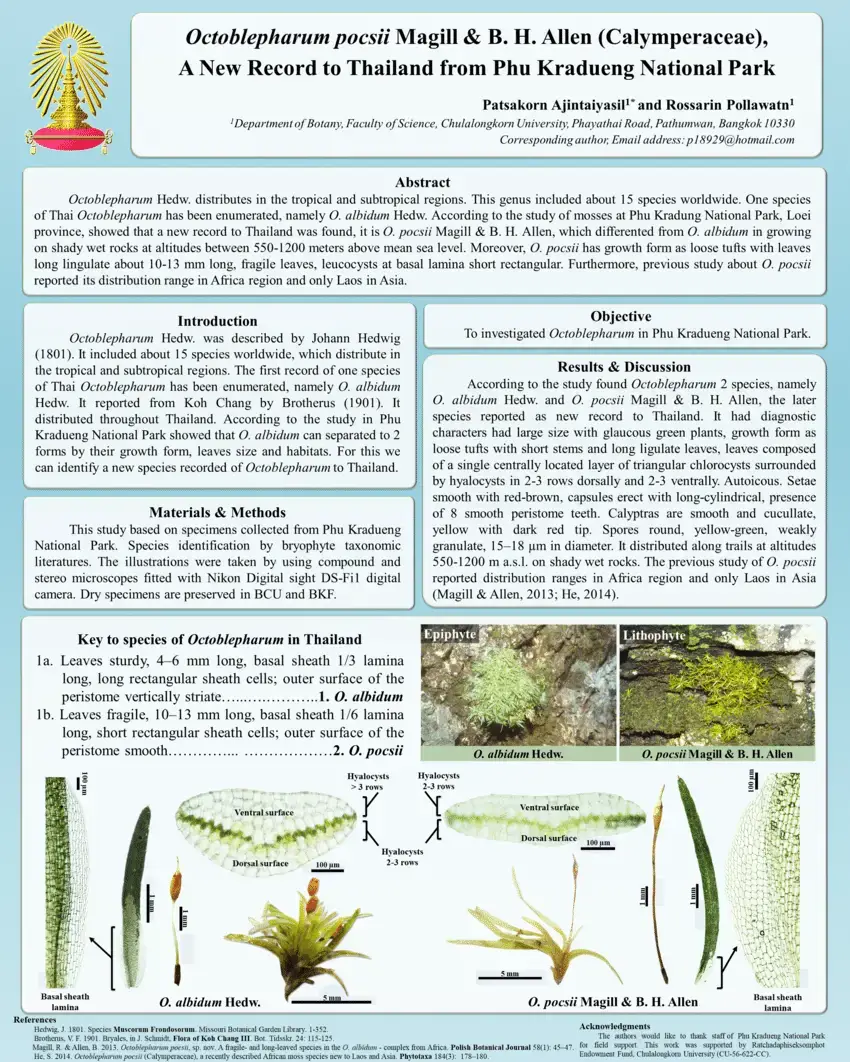
Taxiphyllum-giraldii-MuellHal-MFleisch-A-Habit-B-Pseudoparaphyllia-C-D-Stem.jpg from: https://www.researchgate.net/figure/Taxiphyllum-giraldii-MuellHal-MFleisch-A-Habit-B-Pseudoparaphyllia-C-D-Stem_fig5_354916178
Introduction
Cryptopapillaria feae (Müll.Hal. ex M.Fleisch.) M.Menzel, commonly known as Cryptopapillaria, is a fascinating species of moss belonging to the Meteoriaceae family. This unique moss has captured the attention of bryologists and enthusiasts alike due to its distinctive morphology and ecological adaptations. In this blog post, we will delve into the world of Cryptopapillaria feae, exploring its background, identification, global distribution, habitat, and ecological roles.
Background
Cryptopapillaria feae was first described by Müller Hal. ex M. Fleischer and later reclassified by M. Menzel. It belongs to the Bryophyta division and the Bryopsida class, which encompasses the majority of moss species. The Meteoriaceae family, to which Cryptopapillaria belongs, is known for its pendant or hanging growth habit, often found growing on trees or rocks in humid environments.
Morphology and Identification
One of the most striking features of Cryptopapillaria feae is its unique morphology. The moss forms pendant or hanging strands, typically reaching lengths of 10-30 cm. The stems are slender and flexuous, with irregularly branched filaments. The leaves are ovate-lanceolate, with a papillose or roughened surface, and are arranged in a spiral pattern along the stem.

A-D-Calyptothecium-wightii-Mitt-M-Fleisch-A-and-E-secondary-stem-B-and-F-stem_Q640.jpg from: https://www.researchgate.net/publication/270617333_Re-evaluation_of_the_taxonomic_status_of_Calyptothecium_hamatum_MullHal_MFleisch_Pterobryaceae_Bryophyta
Identifying Cryptopapillaria feae requires careful observation of its microscopic characteristics. The leaf cells are elongated and prorulose, with papillae on the cell surface. The costa (midrib) is absent or very short. Sporophytes are rare in this species, but when present, they are erect and have a cylindrical capsule with a peristome.
Global Distribution and Habitat
Cryptopapillaria feae has a wide global distribution, primarily in tropical and subtropical regions. It has been recorded in various countries across Asia, Africa

2021-10-07-15-30-56.jpg from: https://www.britishbryologicalsociety.org.uk/learning/species-finder/hylocomiastrum-umbratum/
, and Central and South America. This moss thrives in humid environments, such as rainforests, cloud forests, and montane forests.
Cryptopapillaria is typically found growing epiphytically on tree trunks, branches, and twigs. It prefers shaded and moist microhabitats, often in association with other epiphytic bryophytes and lichens. The pendant growth habit of Cryptopapillaria feae allows it to efficiently capture moisture from the air and rainfall, enabling it to thrive in these humid environments.
Ecological Roles and Adaptations
Cryptopapillaria feae

34e8a518493ed752f78a2f96860af7b5.jpg from: https://www.asturnatura.com/fotografia/setas-y-hongos/lentithecium-lineare-e-mull-ex-dennis-k-d-hyde-j-fourn-ying-zhang-3/21033.html
plays important ecological roles in its native habitats. As an epiphyte, it contributes to the diversity and complexity of forest ecosystems. The pendant growth form of Cryptopapillaria provides shelter and microhabitats for various invertebrates, such as insects and arachnids, which find refuge within the dense strands of the moss.
Moreover, Cryptopapillaria feae possesses several adaptations that enable it to thrive in its specific ecological niche. The papillose leaf surface helps to increase the surface area for water absorption and retention. The slender and flexuous stems allow the moss to move with the wind and rain, reducing the risk of damage from strong gusts or heavy downpours.

249295.jpg from: https://inpn.mnhn.fr/espece/cd_nom/6011?lg=en

211811.jpg from: https://inpn.mnhn.fr/espece/cd_nom/5930

largepreview.png from: https://www.researchgate.net/publication/369404531_Resurrection_of_Leucobryum_scalare_MullHal_ex_MFleisch_Bryophyta_Leucobryaceae_based_on_phylogenetic_and_morphometric_evidence

Franck%2B3699%2Bhabit.JPG from: https://botanyprofessor.blogspot.com/2015/02/mosses-of-central-florida-10-cryphaea.html

Life-cycle-of-moss-81_Q640.jpg from: https://www.researchgate.net/figure/Life-cycle-of-moss-81_fig4_268502605
| Characteristic | Description |
|---|---|
| Family | Meteoriaceae |
| Genus | Cryptopapillaria |
| Species | C. feae |
| Growth Habit | Pendant, hanging |
| Stem | Slender, flexuous, irregularly branched |
| Leaves | Ovate-lanceolate, papillose surface |
| Costa | Absent or very short |
| Leaf Cells | Elongated, prorulose, papillose |
| Sporophytes | Rare; erect, cylindrical capsule |
| Habitat | Epiphytic; humid forests |
| Distribution | Tropical and subtropical regions |
Conclusion
Cryptopapillaria feae (Müll.Hal. ex M.Fleisch.) M.Menzel is a remarkable moss species that showcases the incredible diversity and adaptations found within the Bryophyta. Its unique morphology, global distribution, and ecological roles make it a fascinating subject for bryologists and enthusiasts alike. As we continue to study and appreciate the world of mosses,

PHH0032059.png from: https://cryptogam-phh.hcmus.edu.vn/index.php/en/bryophtes?page=8
Cryptopapillaria feae serves as a reminder of the hidden wonders that can be found in the most unexpected places. So the next time you find yourself in a humid forest, take a moment to look closely at the trees and branches, and you might just spot the delicate strands of Cryptopapillaria swaying in the breeze.